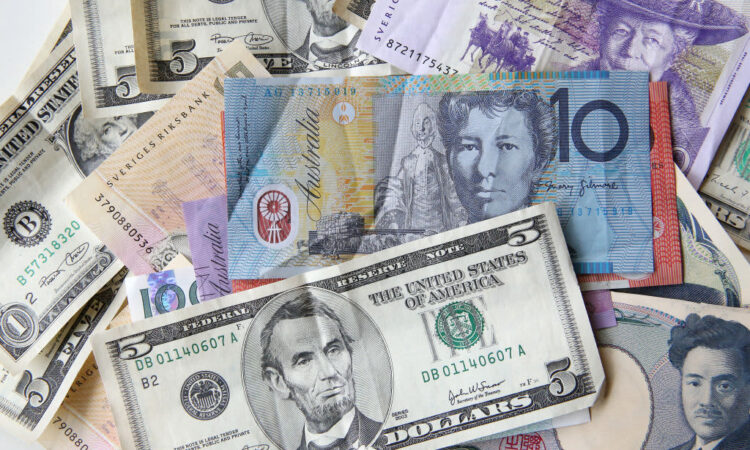
Banknotes of various currencies: the Japanese Yen, the Australian dollar, the Swedish crown, and the US American dollar on a table in Hamburg, Germany, 19 February 2016.
Bodo Marks | Picture Alliance | Getty Images
The dollar on Wednesday climbed from its lowest level in more than three months as investors consolidated positions after four days of losses, supported by data showing the world’s largest economy grew faster than initially thought in the third quarter.
The greenback rose against most currencies except the Swiss franc and New Zealand dollar. In November, however, the dollar remained on pace to post its biggest monthly decline in a year, weighed down by expectations of Federal Reserve rate cuts by the first half of 2024.
The dollar extended gains on news that U.S. gross domestic product increased at a 5.2% annualized rate in the last quarter, faster than the previously reported 4.9%. It was the fastest expansion since the fourth quarter of 2021, the U.S. Commerce Department said in its second estimate of third-quarter GDP.
Economists polled by Reuters had expected GDP growth would be revised up to 5.0%.
“The GDP data helped the dollar a little bit. Investment was a little stronger and that’s a cyclical component,” said Erik F. Nelson, macro strategist, at Wells Fargo in London.
“So if we’re seeing some strength on the cyclical side of the economy, then that could be challenging the rate cut narrative a little bit.”
U.S. rate futures, however, increased bets of a rate cut starting in March, following the GDP data, to a nearly 50% chance of easing, compared with nearly 35% late on Tuesday, the CME’s FedWatch tool showed.
Comments by Fed Governor Christopher Waller flagging a possible rate cut in the months ahead sent U.S. bond yields and the dollar sliding on Tuesday.
In late morning trading, the dollar index , which tracks the currency against six peers, was last up 0.1% at 102.85. Earlier in the Asian session, the dollar hit its lowest since early August at 102.46.
The euro fell 0.2% versus the dollar to $1.0968 , pressured by inflation data from Germany, Europe’s biggest economy, showing price growth slowed to 2.3% year-on-year in November from 3% in October. Inflation in Spain also slowed sharply.
“We’re definitely seeing some consolidation around $1.10 in the euro,” said Wells Fargo’s Nelson. “There’s a little hesitation to push much through that. So the market is catching its breath a little bit after the big dollar move.”
The euro zone-wide inflation figure is due out on Thursday, before the Fed’s preferred measure of U.S. inflation, the personal consumption expenditures index, or PCE.
New Zealand’s dollar was last up 0.1% at US$0.6143, after the Reserve Bank of New Zealand on Wednesday held interest rates steady but warned that further policy tightening might be needed. The currency had surged more than 1% earlier in the session to a four-month high of $0.6208.
Japan’s yen , which is particularly sensitive to U.S. bond yields, rose slightly on the day, with the dollar last down 0.1% at 147.33 after falling to a more-than-two-month low of 146.68 yen.
China’s onshore yuan finished the domestic session at 7.1246 per dollar, the strongest closing price since June 16. The dollar was last down at 7.13.




